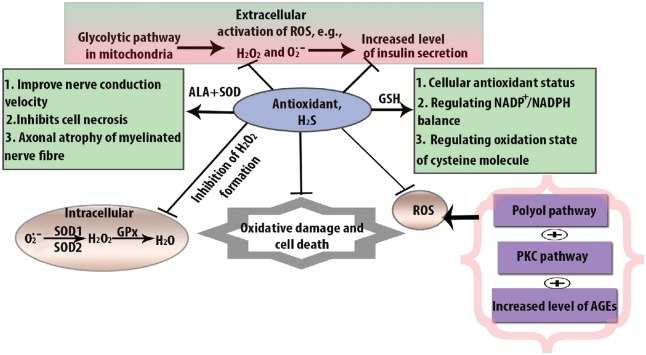Figure 2.
Cellular function of H2S as an antioxidant in DPN.
The beneficial action of H2S through mediating superoxide dismutase (SOD), glutathione (GSH), and catalase (CAT) in hyperglycemia-induced oxidative stress. Superoxide dismutase (SOD) binds with alpha lipoic acid (ALA) to exert antioxidant effects by increasing GSH level. On the other hand, GSH is reduced by H2O2 formation and it is converted into oxidized GSSH. The ratio of nicotinamide adenine dinucleotide phosphate hydrogen (NADPH) to nicotinamide adenine dinucleotide phosphate (NADP) is altered by polyol pathway. Glutathione peroxidase (Gpx) can attenuate the balance to provide antioxidant function. In the case of CAT, it also provides similar antioxidant mechanism by removing H2O2 formation. As a consequence, oxidized GSSH is decreased and GSH is increased. DPN: Diabetic peripheral neuropathy; H2S: hydrogen sulfide; NADPH: nicotinamide adenine dinucleotide phosphate; PKC: protein kinase C; ROS: reactive oxygen species.

